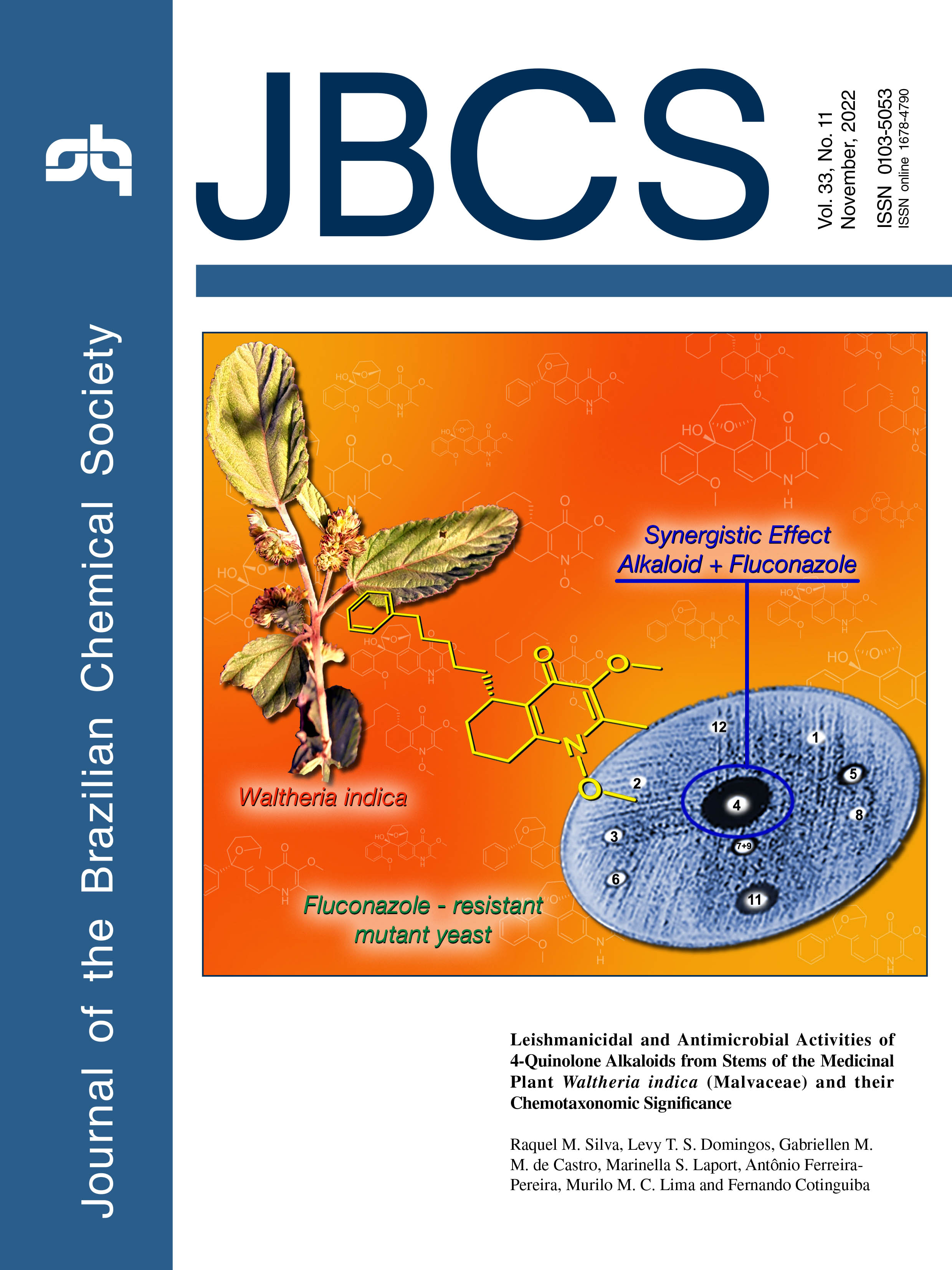vol. 33, No. 11, 2022, p. 1255-1351
Waltheria indica is a plant species that has a pantropical distribution and biosynthesizes 4-quinolone alkaloids. These substances were submitted to biological tests, including chemosensitization assays that use mutant strains of Saccharomyces cerevisiae, which overexpress proteins of Candida albicans (that confer resistance to xenobiotics). Some of these alkaloids showed antimicrobial activity against these resistant strains and also showed a synergistic effect when administered together with the triazole antifungal fluconazole. Details are presented in the Article Leishmanicidal and Antimicrobial Activities of 4-Quinolone Alkaloids from Stems of the Medicinal Plant Waltheria indica (Malvaceae) and their Chemotaxonomic Significance by Raquel M. Silva, Levy T. S. Domingos, Gabriellen M. M. de Castro, Marinella S. Laport, Antônio Ferreira-Pereira, Murilo M. C. Lima and Fernando Cotinguiba on page 1291.
Leishmanicidal and Antimicrobial Activities of 4-Quinolone Alkaloids from Stems of the Medicinal Plant Waltheria indica (Malvaceae) and their Chemotaxonomic Significance
Raquel M. Silva; Levy T. S. Domingos; Gabriellen M. M. de Castro; Marinella S. Laport; Antônio Ferreira-Pereira  ; Murilo M. C. Lima; Fernando Cotinguiba
; Murilo M. C. Lima; Fernando Cotinguiba
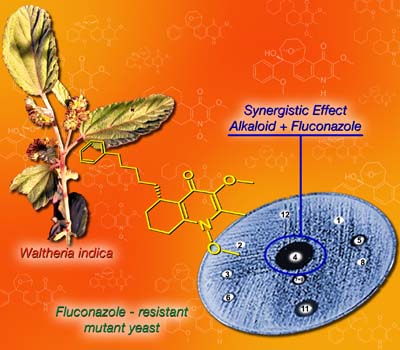
Waltheria indica is a plant species that has a pantropical distribution and biosynthesizes 4-quinolone alkaloids. These substances were submitted to biological tests, including chemosensitization assays that use mutant strains of Saccharomyces cerevisiae, which overexpress proteins of Candida albicans (that confer resistance to xenobiotics). Some of these alkaloids showed antimicrobial activity against these resistant strains and also showed a synergistic effect when administered together with the triazole antifungal fluconazole. Details are presented in the Article Leishmanicidal and Antimicrobial Activities of 4-Quinolone Alkaloids from Stems of the Medicinal Plant Waltheria indica (Malvaceae) and their Chemotaxonomic Significance by Raquel M. Silva, Levy T. S. Domingos, Gabriellen M. M. de Castro, Marinella S. Laport, Antônio Ferreira-Pereira, Murilo M. C. Lima and Fernando Cotinguiba on page 1291.
https://dx.doi.org/10.21577/0103-5053.20220060
Articles J. Braz. Chem. Soc. 2022, 33(11), 1255-1262
A Colorimetric and Fluorescent Dual-Signal Sensor for Detecting Lipase Activity Based on Inner Filter Effect
Ting Du  ; Fu Zhang; Ling Jiang; Danbi Tian
; Fu Zhang; Ling Jiang; Danbi Tian
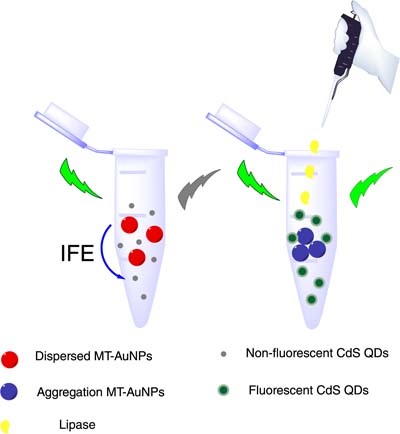
Colorimetric and fluorescent dual-signal method for sensitive detection of lipase activity based on inner filter effect.
https://dx.doi.org/10.21577/0103-5053.20220055
J. Braz. Chem. Soc. 2022, 33(11), 1263-1272
Fast Catalytic Pyrolysis of Tetradecanoic Acid: Formation of Ketones as Intermediate Compounds in the Production of Hydrocarbons
Mailena Dourado  ; Noyala Fonseca
; Noyala Fonseca  ; Roger Fréty
; Roger Fréty  ; Emerson A. Sales
; Emerson A. Sales
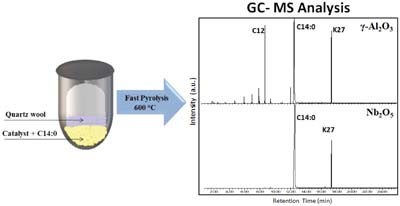
Tetradecanoic acid was pyrolyzed under inert atmosphere at 450 and 600 ºC, using catalysts γ-Al2O3 and Nb2O5. Partially deoxygenated compounds were obtained, the main product being 14-heptacosanone (K27).
https://dx.doi.org/10.21577/0103-5053.20220056
J. Braz. Chem. Soc. 2022, 33(11), 1273-1280
Hybrid MAPbI3 Perovskite Growth Mechanism from Irregular Particles to Cuboid and Hopper-Type Morphologies
Ariany Bonadio  ; Jose A. Souza
; Jose A. Souza
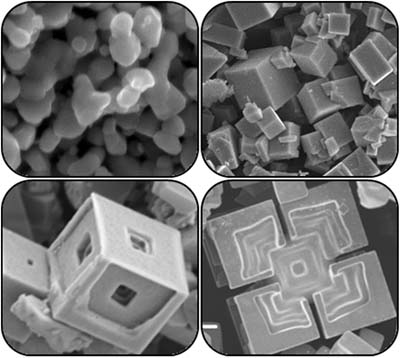
Morphology evolution of MAPbI3 particles from irregular morphology to well-defined cubic and hopper-type morphology obtained by varying the reaction conditions.
https://dx.doi.org/10.21577/0103-5053.20220057
J. Braz. Chem. Soc. 2022, 33(11), 1281-1290
Friedelane Triterpenes with Cytotoxic Activity from the Leaves of Maytenus quadrangulata (Celastraceae)
Mariana G. de Aguilar  ; Grasiely F. de Sousa
; Grasiely F. de Sousa  ; Fernanda C. G. Evangelista; Adriano P. Sabino; Karen C. Camargo; Sidney A. Vieira Filho; Yule R. F. Nunes; Lucienir P. Duarte
; Fernanda C. G. Evangelista; Adriano P. Sabino; Karen C. Camargo; Sidney A. Vieira Filho; Yule R. F. Nunes; Lucienir P. Duarte
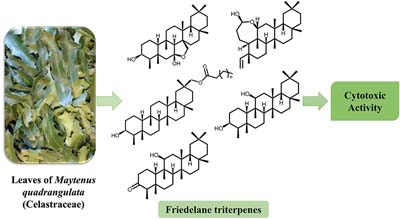
New friedelane triterpenes from Maytenus quadrangulata were identified and showed potential cytotoxicity.
https://dx.doi.org/10.21577/0103-5053.20220058
J. Braz. Chem. Soc. 2022, 33(11), 1291-1298
Leishmanicidal and Antimicrobial Activities of 4-Quinolone Alkaloids from Stems of the Medicinal Plant Waltheria indica (Malvaceae) and their Chemotaxonomic Significance
Raquel M. Silva; Levy T. S. Domingos; Gabriellen M. M. de Castro; Marinella S. Laport; Antônio Ferreira-Pereira  ; Murilo M. C. Lima; Fernando Cotinguiba
; Murilo M. C. Lima; Fernando Cotinguiba

A chemical investigation of the stem of Waltheria indica (Malvaceae) yielded twelve 4-quinolone alkaloids. These alkaloids were submitted to bactericidal tests, leishmanicidal and verification of the phenotypic expression of fluconazole-resistance reversion potential.
https://dx.doi.org/10.21577/0103-5053.20220060
J. Braz. Chem. Soc. 2022, 33(11), 1299-1308
Per-Aqueous Liquid Chromatography for the Separation of Polar Compounds-Preparation and Characterization of Poly(ethylene oxide-co-dimethylsiloxane) Based Stationary Phase
Giselle O. Carvalho; Allyson L. R. Santos  ; Anizio M. Faria
; Anizio M. Faria
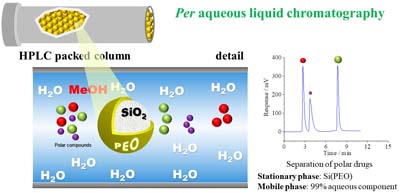
Development of a polar high-performance liquid chromatography (HPLC) stationary phase based on poly(ethylene oxide-co-dimethylsiloxane) thermally immobilized on silica particles for separations of polar compounds under highly aqueous mobile phases. Per-aqueous liquid chromatography mode, a greener liquid chromatography approach.
https://dx.doi.org/10.21577/0103-5053.20220061
J. Braz. Chem. Soc. 2022, 33(11), 1309-1318
Mercury Concentration in Liver Tissues of South American Fur Seals (Arctocephalus australis) from Southwestern Atlantic Ocean
Guilherme S. Lima  ; Amauri A. Menegario
; Amauri A. Menegario  ; Everton T. Sulato
; Everton T. Sulato  ; Jorge H. Pedrobom; Juan P. Torres-Florez; Marcus A. G. de Araújo Júnior; André S. Barreto
; Jorge H. Pedrobom; Juan P. Torres-Florez; Marcus A. G. de Araújo Júnior; André S. Barreto
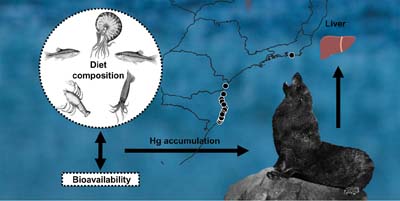
Mercury concentrations were analyzed in liver tissues of South American fur seals (Arctocephalus australis) found stranded in southern and southeastern Brazil, using the cold vapor generation atomic fluorescence spectrometry technique.
https://dx.doi.org/10.21577/0103-5053.20220062
J. Braz. Chem. Soc. 2022, 33(11), 1319-1331
Linseed Oil Nanoemulsion with Pluronic® F127 Loaded with Betulinic Acid: Preparation, Rheology, MTT Assay and in vitro Release Kinetics
Louhana M. Rebouças; Alexandre C. C. Sousa; Nilce V. Gramosa; Tamara G. de Araújo; Fátima de Cássia E. de Oliveira; Cláudia do Ó Pessoa; Rinaldo S. Araújo; Emília M. A. Santos; Nágila M. P. S. Ricardo
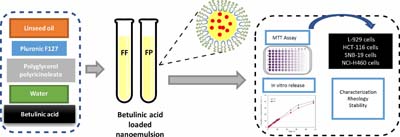
A nanoemulsion containing betulinic acid and linseed oil, stabilized with Pluronic F127 and polyglycerol polyricinoleate (PGPR), has antitumor cytotoxic activity and controlled release.
https://dx.doi.org/10.21577/0103-5053.20220063
J. Braz. Chem. Soc. 2022, 33(11), 1332-1341
Effect of Multi-Pass Rolling on the Performance of AZ31 Magnesium Alloy Anode in Mg-Air Battery
Jinchao Zou  ; Junpeng Wang; Zhiquan Huang; Tao Zhang
; Junpeng Wang; Zhiquan Huang; Tao Zhang
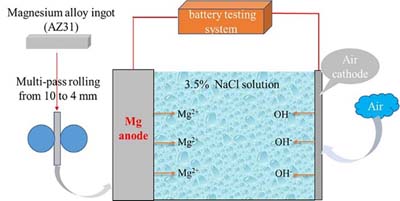
In this work, the influence of rolling passes on microstructure, corrosion behavior, electrochemical performance, and battery performance of AZ31 magnesium alloy was studied.
https://dx.doi.org/10.21577/0103-5053.20220064
J. Braz. Chem. Soc. 2022, 33(11), 1342-1351
The Influence of the Platinum Weight Percentage in the Catalyst Formulation on the Performance of a High Temperature Ethanol Electroreformer Based on H3PO4-Doped Polybenzimidazole for Green Hydrogen Production
Bruno G. C. Alves; Dryade F. de Paula; Rudy Crisafully; José J. Linares
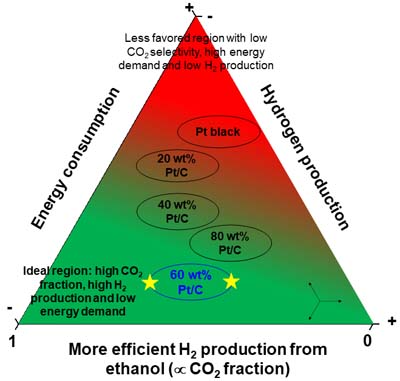
Platinum weight percent (wt.%) in the catalyst formulation influences the performance of a high temperature (up to 175 °C) ethanol electroreformer in terms of energy demand, hydrogen production and efficiency of ethanol to CO2 conversion. The optimal conditions are achieved using the 60 wt.% Pt/C catalyst.
https://dx.doi.org/10.21577/0103-5053.20220066
Online version ISSN 1678-4790 Printed version ISSN 0103-5053
Journal of the Brazilian Chemical Society
JBCS Editorial and Publishing Office
University of Campinas - UNICAMP
13083-970 Campinas-SP, Brazil
Free access










